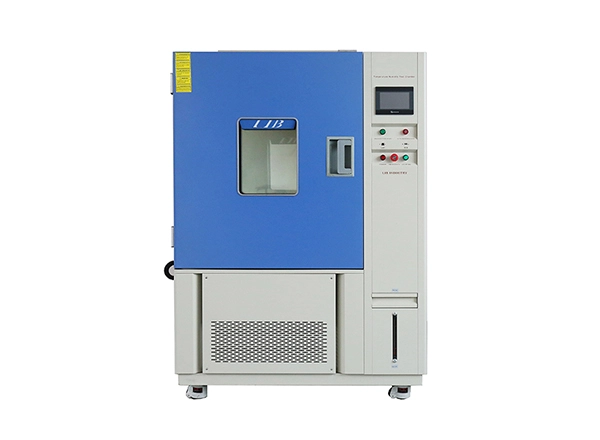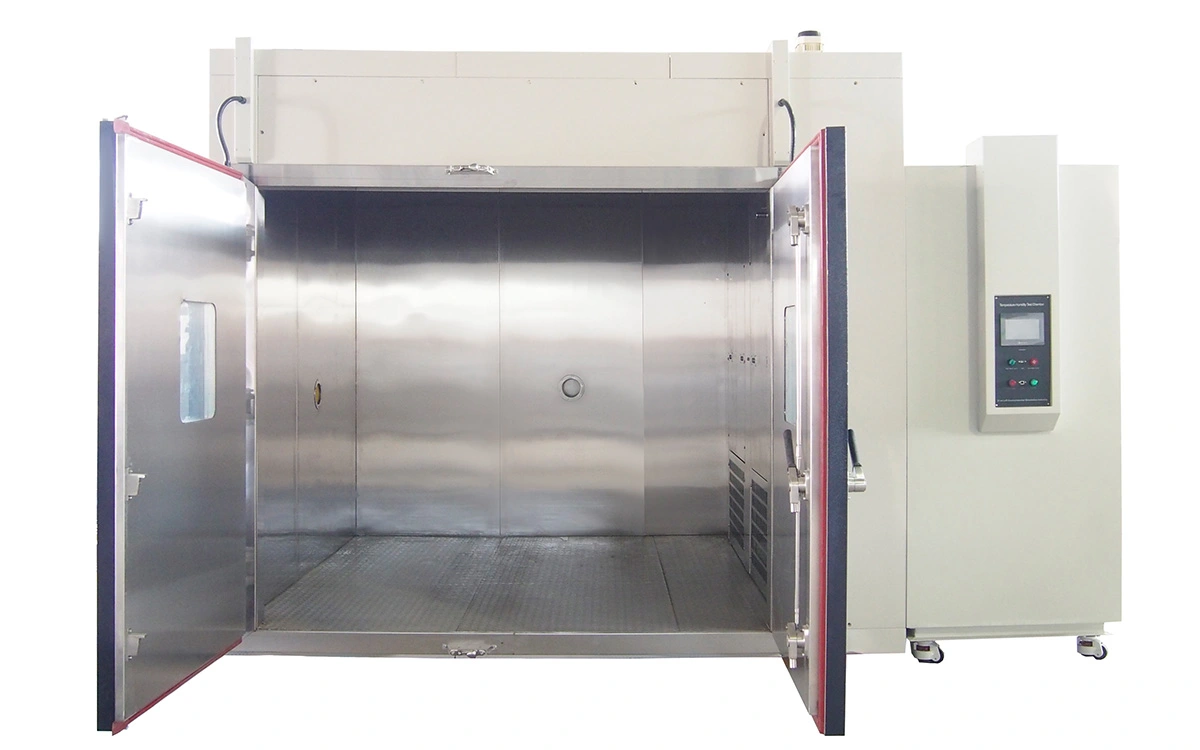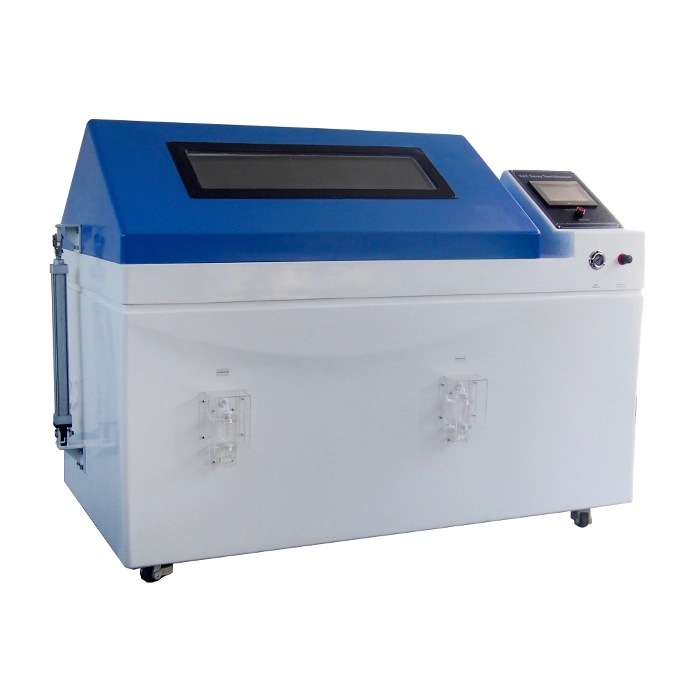


LIB thermal shock test chamber can be divided into two types: two-chamber and three-chamber. The two-chamber thermal shock chamber consists of a high-temperature shock zone and a low-temperature shock zone, each equipped with a basket for moving up and down. On the other hand, the three-chamber thermal shock test chamber can be used both for thermal shock testing and separately as either a high-temperature or a low-temperature chamber. It is widely utilized in various industries for reliability testing of electronic products, automotive components, battery cells, etc. Many research institutions and universities rely on it to enhance the quality and performance of their products.
Model | TS-162 | TS-340 | TS-500 | |
Internal Dimensions (mm) | 300*300*250 | 450*450*360 | 650*650*500 | |
Overall Dimension (mm) | 1560*870*1545 | 1710*1020*1845 | 1910*1220*2265 | |
Interior Volume (mm) | 22L | 72L | 211L | |
Loading Capacity | 20kg | 30kg | 50kg | |
Pre-heat Room | Upper limit Temperature | +220℃ | ||
Heating Time | Ambient ~ + 200℃, within 30 minutes | |||
Pre-cool Room | Lower limit Temperature | -75℃ | ||
Cooling time | Ambient ~ -70℃, within 30 minutes | |||
Test Room | High Temperature Exposure Range | Ambient +20 ~ +200°C | ||
Low temperature Exposure Range | –65 ~ -5°C | |||
Temperature Fluctuation | ≤±0.5℃ | |||
Temperature Deviation | ≤±3 ℃ | |||
Temperature Recovery Time | Within 5 minutes | |||
Cooling System | Mechanical compression refrigeration system | |||
Controller | Programmable color LCD touch screen controller, Ethernet connection | |||
Safety Device | Over-temperature protection, Over-current protection; Refrigerant high-pressure protection; Earth leakage protection | |||
Exterior Material | Steel Plate with protective coating | |||
Interior Material | SUS304 stainless steel | |||
Observation Window | Interior lighting, double-layer thermo stability silicone rubber sealing | |||
Standard Configuration | 2 shelves | |||
When testing products under the continuous temperature impact of high and low temperatures, it assesses the extent to which they can withstand such conditions. It records the chemical changes or physical damage caused by thermal expansion and contraction under rapidly changing temperature differentials. With no moving parts in the test chamber, the testing of samples remains free from mechanical shocks, ensuring high reliability. Samples are stationary during testing, facilitating online testing.
The three major working principles of a three-chamber thermal shock test chamber are as follows:
The high-temperature zone utilizes a comparison signal to control the on/off time ratio of solid-state relays and adjust the output power of heaters through the instrument's PID logic circuit, achieving automatic temperature control.
In the low-temperature zone, after passing through a screening process and throttling valve, the high-temperature gas re-enters the evaporator inside the operating chamber, absorbs heat, and vaporizes, before being sucked in by the compressor. After repeated operation, the temperature inside the operating chamber reaches the required level.
The product testing zone is controlled by the instrument's automatic high and low-temperature air valves, which switch between high and low temperatures, forming closed-loop air circulation systems with either the high-temperature or low-temperature chambers to rapidly achieve the target test temperatures.
The principle of the three-chamber thermal shock test chamber is simple: product testing is achieved by continuously alternating between high and low temperatures to simulate thermal shock, thereby assessing changes in products or materials under environmental conditions.

 English
English русский
русский français
français العربية
العربية Deutsch
Deutsch Español
Español


